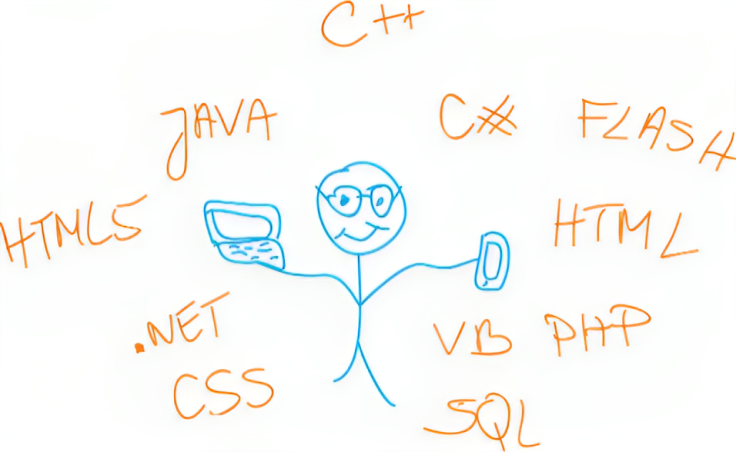
In the ever-evolving digital landscape, the synergy between web application development services and front-end development is shaping the way businesses engage with users and deliver seamless digital experiences. Web applications have become integral tools for organizations, providing dynamic, interactive, and user-friendly interfaces. This article explores the intricacies of web application development services and the pivotal role played by front-end development in enhancing user experiences and maximizing the impact of digital solutions.
Comprehensive Solution Architecture of Web Application Development Services
Web application development services encompass a holistic approach to building robust and scalable solutions. This involves crafting a comprehensive architecture that considers factors such as database design, server-side scripting, and client-side functionality. The goal is to create an infrastructure that supports the entire application lifecycle.
Backend Development
The backbone of web applications lies in backend development. Backend developers focus on server-side logic, database management, and application integration. They ensure that data is processed, stored, and retrieved efficiently, providing the necessary functionality for seamless user interactions.
Scalability and Performance Optimization
Scalability is a key consideration in web application development. Services in this realm prioritize optimizing performance to handle varying levels of user traffic and data processing. This includes efficient coding practices, load balancing, and the implementation of scalable server architectures.
Security Measures
With cyber threats on the rise, security is a paramount concern in web application development. Services in this domain implement robust security measures, including data encryption, secure authentication processes, and protection against common vulnerabilities. A secure backend is fundamental to safeguarding user data and maintaining the integrity of the application.
User Interface (UI) Design
Front-end development, which concentrates on the user interface (UI), determines how users interact with the application. UI designers, responsible for front-end development services, create visually appealing and intuitive interfaces that enhance the user experience. This involves designing layouts, navigation elements, and interactive components that align with the overall aesthetic and branding of the application. The synergy between front-end development services and UI design ensures that the application is not only aesthetically pleasing but also provides a seamless and intuitive user journey. As users navigate through the thoughtfully designed interfaces, front-end development plays a crucial role in shaping their overall perception and satisfaction with the application. By incorporating front-end development services, businesses can elevate their digital presence, fostering positive user experiences that leave a lasting impression.
Responsiveness Across Devices
Front-end developers prioritize creating responsive designs that adapt seamlessly to different devices and screen sizes. With the proliferation of smartphones and tablets, ensuring a consistent and enjoyable user experience across various platforms is critical for the success of web applications.
Interactive User Experience (UX)
User experience (UX) goes beyond visual aesthetics; it encompasses the overall feel and interaction flow of the application. Front-end development services focus on creating an interactive and user-friendly environment. This involves implementing features such as real-time updates, smooth transitions, and intuitive navigation.
Cross-Browser Compatibility
Web applications must perform consistently across various web browsers. Front-end developers ensure cross-browser compatibility by testing and optimizing the application's display and functionality on different browsers. This guarantees a uniform experience for users, regardless of their choice of browser.
Harmonizing Forces — Where Web Application Development Converges with Front-End Expertise
The collaboration between web application development services and front-end development results in the seamless integration of backend functionality with an intuitive and visually appealing user interface. This synergy ensures that the application not only performs efficiently but also provides users with a positive and engaging experience.
Efficient Data Flow and Presentation
While web application development services focus on efficiently managing and processing data on the backend, frontend development ensures that this data is presented to users in a clear and meaningful way. The efficient flow of information from backend to frontend is vital for creating a coherent and user-friendly experience.
Adaptable and Scalable Design
The collaboration between backend and frontend development enables the creation of adaptable and scalable designs. As the backend infrastructure scales to handle increased user loads, the frontend seamlessly adapts to different devices and user interactions. This adaptability is crucial for addressing the evolving needs of users and the demands of the market.
Real-Time Interactivity
The integration of real-time interactivity is a hallmark of the symbiosis between web application development and front-end expertise. Users can experience dynamic updates, instant feedback, and interactive features that enhance engagement. This real-time interactivity is achieved through a harmonious collaboration between backend functionality and front-end responsiveness.
Best Practices for Optimal Collaboration: Overcoming Challenges
Clear Communication Protocols
Effective collaboration between web application development services and front-end development relies on clear communication protocols. Regular meetings, collaborative tools, and transparent documentation facilitate a shared understanding of project goals, timelines, and requirements.
Agile Development Methodology
Embracing an agile development methodology is essential for overcoming challenges and adapting to evolving project needs. Agile practices, such as iterative development, frequent testing, and continuous feedback loops, ensure that both backend and front-end components align seamlessly throughout the development lifecycle.
User-Centric Design Thinking
Adopting a user-centric design thinking approach is critical for the success of web applications. Both backend and front-end development teams should prioritize creating an intuitive user interface and seamless user experience. Understanding the users' needs, behaviors, and pain points allows developers to tailor the application to meet those specific requirements. Additionally, regular user testing and feedback loops are essential to iteratively refine and enhance the application based on real user experiences. By fostering a user-centric mindset throughout the development process, teams can ensure that their web applications not only meet technical requirements but also provide meaningful value to end-users.
All in All
In the symphony of web application development services harmonizing with front-end expertise, the result is nothing short of digital brilliance. The backend's robust architecture seamlessly integrates with the front-end's visually captivating interface, creating a digital ecosystem where form and function coalesce. This collaboration ensures not just the efficient processing of data but the elevation of user experiences to new heights.









